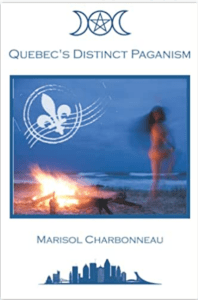I heard Christian Rätsch (1957–2022) speak in person only once, at a conference in England in the 2000s, shortly after I had bought a book he co-wrote, Witchcraft Medicine: Healing Arts, Shamanic Practices, and Forbidden Plants. I also treasure a recorded lecture of his on henbane beer and such topics, in which he scoffs at the famous Reinheitsgebot (beer purity law of 1516) that limited ingredients to water, barley, hops, hissing, “Hops isss a depresssant!” — CSC
The Undying Contributions of the Late Christian Rätsch
From Coby Michael’s The Poisoner’s Apothecary Patreon page.
Reprinted with permission.

Christian Rätsch, 1999.
On the 17th of September, 2022 author, lecturer and ethnobotanist Christian Rätsch (Hamburg, Germany) died of a stomach ulcer that he had been dealing with himself for years. Rätsch leaves behind wife and fellow author Claudia Müller-Ebeling.
Christian Rätsch, Ph.D., is a world-renowned anthropologist and ethnopharmacologist who specializes in the shamanic uses of plants. He is the author of Marijuana Medicine and coauthor of Plants of the Gods, Shamanism and Tantra in the Himalayas, Witchcraft Medicine, and The Encyclopedia of Psychoactive Plants. He lives in Hamburg, Germany, and lectures around the world. He has served as president of the German Society of Ethnomedicine. (Inner Traditions/Bear & Company)
Ethnobotanical Contributions
Rätsch was one of the single most important authors of ethnobotanical research, the Poison Path, the Psychedelic Renaissance and poisonous/psychoactive plant lore. He earned a doctorate studying Native American cultures living and studying with indigenous cultures. As a child he became interested in shamanic practices and the study of plants. He worked closely with indigenous plant spirit medicine, preserving an extensive body of traditional lore. He also experimented with various psychedelic substances since a young age, and eventually became friends with LSD researcher Timothy Leary. He is the founder and co-editor of The Yearbook of Ethnomedicine and the Study of Consciousness.
His work was something that I discovered early on in my Poison Path studies, because he was one of the only authors at the time to not only take an interest in poisonous and psychoactive plants but also provide the reader with extensive history, folklore and chemical information from a practical and academic standpoint. His book Witchcraft Medicine: Healing Arts, Shamanic Practices and Healing Plants, was the first work of his that I read, a complete ethnobotanical history of European psychedelic practices in the context of witchcraft.
Originally published in 1979, this book was a precursor to the megalithic Encyclopedia of Psychoactive Plants. Originally written by Richard Evans Schultes and Albert Hoffman, all three titans in their own right. World-renowned anthropologist and ethnopharmacologist Christian Ratsch provides the latest scientific updates to this classic work on psychoactive flora by two eminent researchers.
The Encyclopedia of Psychoactive Plants
In my opinion , the single most important modern day compendium of ethnobotanical information in the Western Hemisphere. The book is over 900 pages long with 797 color photographs and 645 black and white drawing. It is a comprehensive tome on sacred plant knowledge from around the world. Accessible and all in one place, this is one of the few books that provides ALL of the available information!
 Other titles by Christian Rätsch
Other titles by Christian Rätsch
Encyclopedia of Psychoactive Plants
Plants of Love: The History of Aphrodisiacs and A Guide to their Identification and Use
Gateway to Inner Space: Sacred Plants, Mysticism, and Psychotherapy
Marijuana Medicine: A World Tour of the Healing and Visionary Powers of Cannabis
He has written extensively, books and articles, in German.
A Permanent Impact
The work of Christian Rätsch has been invaluable in my own studies of psychoactive and poisonous plants. The tireless work and attention to detail that was required to bring such a tome of knowledge into manifestation is no-doubt divinely driven. While the world has lost an amazingly curious mind, he has left behind a body of work that will continue to grow, evolve and influence those of us continuing this work. I would have loved to have meet you Christian, and thank you for your contribution but I have a feeling we will meet one day.
You can visit his website but it is all in German www.christian-raetsch.de/

 As ever, book reviews in The Pomegranate: The International Journal of Pagan Studies are open-access free downloads. Here are links to the four in this issue.((I receive a small commission on Amazon sales, which helps to pay for this website.))
As ever, book reviews in The Pomegranate: The International Journal of Pagan Studies are open-access free downloads. Here are links to the four in this issue.((I receive a small commission on Amazon sales, which helps to pay for this website.))

 The Imagination of Plants: A Book of Botanical Mythology
The Imagination of Plants: A Book of Botanical Mythology


